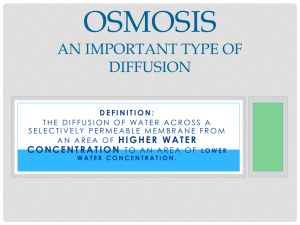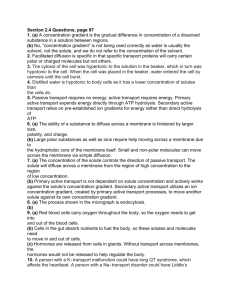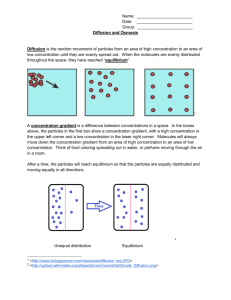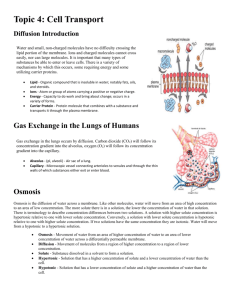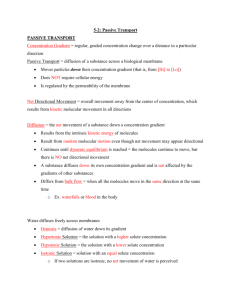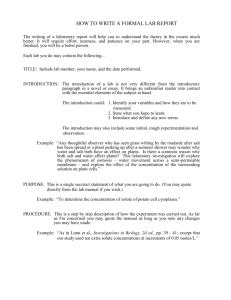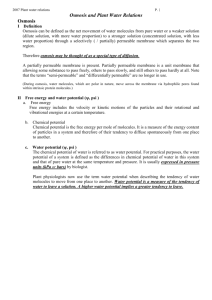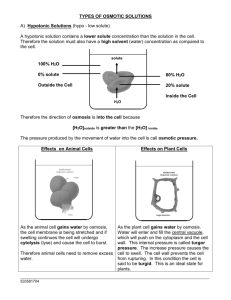BIOLOGY for June y12 students
advertisement
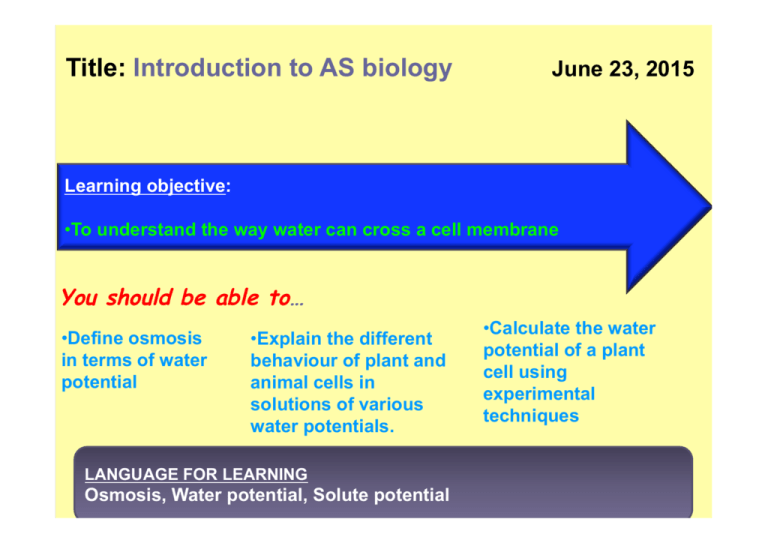
Title: Introduction to AS biology June 23, 2015 Learning objective: • To understand the way water can cross a cell membrane You should be able to… • Define osmosis in terms of water potential • Explain the different behaviour of plant and animal cells in solutions of various water potentials. LANGUAGE FOR LEARNING Osmosis, Water potential, Solute potential • Calculate the water potential of a plant cell using experimental techniques Osmosis • At GCSE you might have defined osmosis as the movement of water from a weak solution to a strong solution through a semi-permeable (partially permeable) membrane. • At advanced level you should explain osmosis as the movement of water down its water potential gradient. Osmosis Weak solution separated from a strong solution by a partially membrane. Weak solution (high water potential) Partially-permeable membrane Strong solution (low water potential) Concentration gradient for water molecules Solute cannot get through the membrane so only the water moves – it moves down its water potential gradient (from high to low). Water potential (ψ) • Water potential is a measure of the tendency for water to move from one place to another. • Water always moves from a region of higher water potential to a region of lower potential. • By definition pure water has a water potential of 0. • Addition of solute lowers the water potential – it therefore becomes negative. The more solute, the more negative water potential is. • The amount by which solute molecules lower the water potential is known as the solute potential (ΨS). Solute potential of potato cells • Using the worksheet provided, carry out an experiment to work out the solute potential of the potato you have been provided with. • Your work should be carried out with due regard to health and safety, think about the variables involved and produce a piece of work that is of A LEVEL standard. • You will be assessed on this work in September Osmosis and Blood Cells … If blood cells are placed in solutions of different strength, they absorb or lose water depending upon the water potential of the solutions 1. Hypotonic solution 2.Isotonic solution 3.Hypertonic solution What do each of these terms mean? Would the response of the cell be different if it was a plant cell rather than an animal one? Why?


